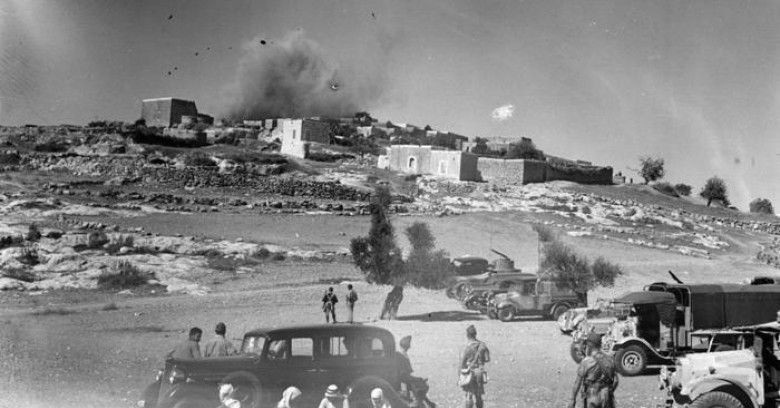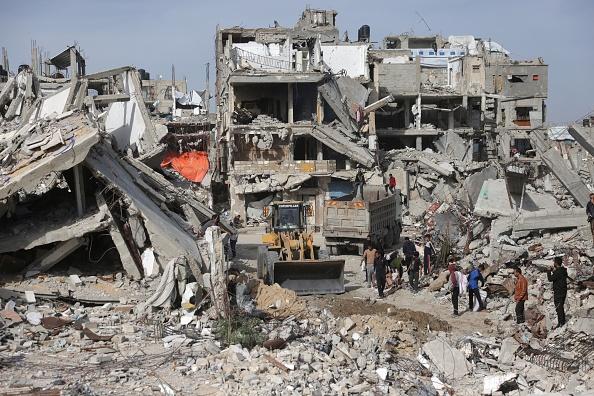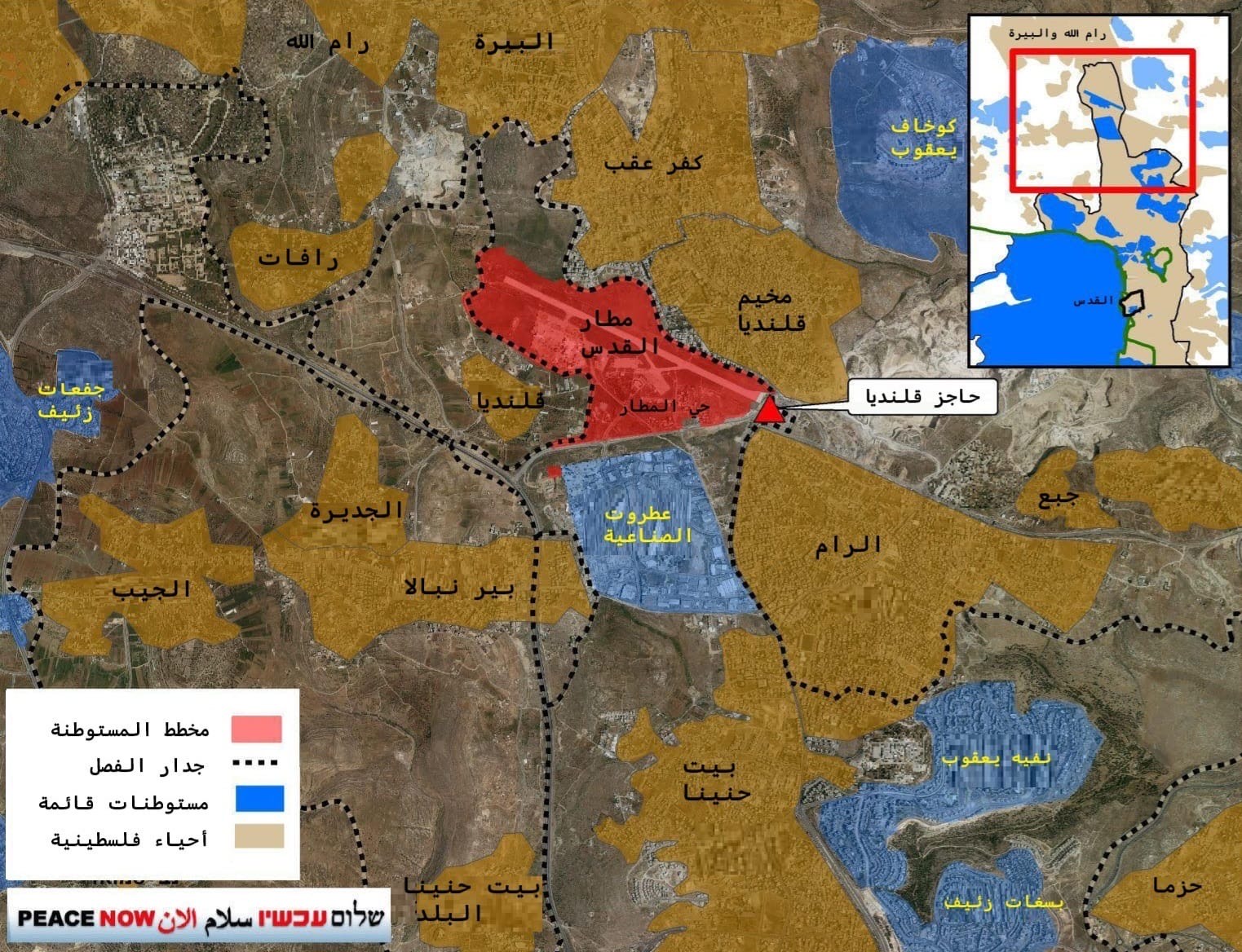RAMALLALH, May 14, 2018 (WAFA) – The number of Palestinians worldwide has doubled nine times since their forced dispersion and displacement from their homes and land in Palestine in 1948, the Palestinian Central Bureau of Statistics (PCBS) said on Monday.
In a review of the conditions of the Palestinian people on the eve of the 70th anniversary of the Palestinian Nakba (catastrophe), Ola Awad, president of the Palestinian Central Bureau of Statistics (PCBS), said the number of Palestinians worldwide has doubled about nine-times while the Israeli occupation controls more than 85% of the land of historical Palestine.
The Nakba describes a process of ethnic cleansing in which an unarmed nation was destroyed and its population displaced systematically by another nation. The Nakba resulted in the displacement of 800,000 out of the 1.4 million Palestinians who lived in historical Palestine in 1948 in 1,300 villages and towns. The majority of the displaced Palestinians ended up in neighboring Arab countries and in the West Bank and Gaza Strip and other countries in the world. Furthermore, thousands of Palestinians – who stayed in the area controlled by the Israeli occupation in 1948 – were driven out of their homes and lands, seized by the occupation government.
According to documentary evidence, the Israelis controlled 774 towns and villages and destroyed 531 Palestinian towns and villages during the Nakba. The atrocities of Zionist forces also included more than 70 massacres in which more than 15,000 Palestinians were martyred, to date, the Israeli occupation continues its control over 85% of the area of historical Palestine, which amounts to 27,000 sq. km, while the remaining areas continue to endure further attempts of usurpation and control.
Pre and Post Nakba Demographics
The population of Palestine in 1914 was around 690,000 of whom only 8% were Jewish. In 1948, the number of Palestinians in Palestine exceeded 2 million, 31.5% of them were Jews, where the number of Jews doubled more than six times during this period. Between 1932 and 1939, the largest number of Jewish immigrants to Palestine reached 225,000 people. Between 1940 and 1947, more than 93,000 Jews poured into Palestine. Palestine received around 318,000 Jews between 1932 and 1947 and 540,000 from 1948 to 1975.
Despite the displacement of more than 800,000 Palestinians in 1948 and the displacement of more than 200,000 Palestinians to Jordan and other countries after the 1967 war, the 2017 Population, Housing and Establishments Census showed that the Palestinian population in the State of Palestine at the end of 2017 was 4.8 million in the West Bank and Gaza Strip, in addition to 1.56 million within the territories occupied in 1948. The Palestinians in Jerusalem governorate count 435,000 people, 64.6% of them (281,000 people) live in those parts of Jerusalem which were annexed after the Israeli occupation in 1967. These data show that the Palestinians represent 49.4% of the population of historical Palestine. It is noteworthy that the number of Palestinians in the world reached by the end of 2017 about 13 million people, which means that the number of Palestinians in the world has doubled more than 9 times since the events of the Nakba of 1948.
Palestinian Refugees Status
Records of the United Nations Relief and Work Agency (UNRWA) reported on 1st January 2017 a total of 5.87 million Palestinian refugees, 28.4% of whom live in 58 camps (10 in Jordan, 9 in Syria, 12 in Lebanon, 19 in the West Bank and 8 in the Gaza Strip). Estimates however indicate that this is the minimum number of refugees since many of them are not registered. This number does not include the Palestinians displaced in the period from 1949 till the June 1967 war. The UNRWA definition of refugees does not cover the Palestinians who migrated or who were displaced after 1967 because of the war and who were not registered refugees.
On the other hand, the 2017 Population, Housing and Establishment Census showed that refugees represented 42.5% of the population of the State of Palestine, with 66% of the total population of Gaza Strip are refugees. The flux of refugees turned the Gaza Strip in one of the highest population densities in the world.
Israeli Settlements: Continuous Expansion
There were 425 illegal Israeli settlements and military bases in the West Bank (including 150 settlements and 107 outposts) by the end of 2016. Data indicated that the total number of settlers in the West Bank was 636,452 by the end of 2016, 302,188 (47.5%) of them lived in Jerusalem Governorate, including 222,325 of them lived in parts of Jerusalem which were annexed by Israel in 1967. In demographic terms, the proportion of settlers to the Palestinian population in the West Bank is around 21.8 settlers per 100 Palestinians compared with 68.3 settlers per 100 Palestinians in Jerusalem Governorate.
The data indicated that the Expansion and Annexation Wall isolates more than 12% of the West Bank area, which imposed restrictions on 1.9 million inhabitants living in areas close to the wall and around 400,000 inhabitants live in Area "C".
Israeli house demolitions
In 2017, the Israeli occupation demolished 433 buildings (houses and establishments) in 2017, 46% of them in Jerusalem. Demolished houses include 170 building house (148 of them in Jerusalem), and 263 establishments, forcibly displacing 128 households (700 persons) in the West Bank and East Jerusalem, half of them are children. They also threatened to demolish 1,030 buildings in 2017 at a time when the need of housing units for Palestinians increase. In figures, about 61% of households in Palestine need to build new housing units over the next decade according to the data of housing conditions survey 2015 (one residential unit or more), The demolition of the buildings resulted in large economic losses with a value of about $300 per square meter, meaning that the losses of Palestinians in Jerusalem amounted to about $51 million during the years 2000-2017.
At the time the Israeli occupation authorities demolish Palestinian buildings and put obstacles and impediments to the issuance of building permits, they approved licenses to construct thousands of housing units in Israeli settlements on the Palestinian land of Jerusalem. The Israeli occupation began building 1,600 housing units in the settlements of Gilo and Har Homa during the year 2017 within the framework of a plan to separate the city of Jerusalem from the city of Bethlehem, and it accelerated the preparation of plans for the construction of a new settlement in Qalandia airport area to isolate Jerusalem from its Arab surroundings from the northwest, in addition to the annexation of 250 dunums to the municipality of Jerusalem, located within the area so-called “no-man‘s land” since 1967 for the establishment of new settlements projects, as well as announcing a plan to build 6 hotels including 1,300 hotel rooms on the land of Jabal al-Mukabber.
In 2017, the Israeli occupation intensified settlement expansion in the West Bank ratifying the construction of 16,800 new housing units, one third of which in Occupied Jerusalem. Furthermore, the Israeli occupation approved plans for the construction of four new settlements to the south of Nablus Governorate and three other in the Jordan Valley, with the objective of tripling the settlers’ population in the Jordan Valley. In the same time, the occupation authorities hinder any Palestinian construction expansion, especially in the areas in and around Jerusalem and in the so-called “Area C” in the West Bank, which is still under full Israeli control.
More than 10,000 Palestinians killed since 2000
The number of Palestinians killed by Israel between September 29, 2000 and December 31, 2017 was 10,463. The bloodiest year was 2014 with 2,240 Palestinians were killed, 2,181 of whom from Gaza Strip. The number of Palestinians killed reached 94 persons during the year 2017, out of which 16 were children and two women. The number of Palestinians killed since the start of the March of Return on March 30 reached 49 people, six of them children and two journalists. The Israeli occupation also holds the bodies of 15 Palestinians its forces had killed over the years.
During the year 2017, the number of wounded was 8,300, of them 5,400 were wounded in December 2017, following the announcement by President Trump on Jerusalem. The number of wounded in the Gaza Strip reached 9,520 since the beginning of the Marches of Return, including more than 800 children, 283 women and 163 paramedics.
About 1 million detentions since 1967
The Israeli occupation arrested around 6,500 Palestinians, 350 of them are children, 62 are women (21 of them are mothers and 8 minors), in addition to 6 deputies in the Palestinian Legislative Council. Since the beginning of 2018 till the end of April 2018, the Israeli occupation has arrested 2,378 Palestinians (including 459 children and 47 women). In addition, the Israeli occupation imposed home arrest on 300 children in Jerusalem since October 2015. Around 20 children are still under home arrest.
Land Confiscation
The Israeli occupation approved the confiscation of about 2,100 dunums of Palestinian land during the year 2017, as well as the confiscation of hundreds of dunums of Palestinian lands through the expansion of Israeli roadblocks and the establishment of military checkpoints to protect the settlers, in addition to renewed orders to seize 852 dunums of Palestinian land in the West Bank.
The Israeli measures are one of the main reasons for the decline in agricultural land in the West Bank. Area C forms about 60% of the West Bank, which is still under full Israeli control, depriving many farmers from accessing their land and farming it. The Israeli occupation razed and uprooted about 10,000 trees in 2017, and more than 70,000 dunums, most of them are cultivated with irrigated crops were transferred to the settlers in the Israeli settlements.
Continuous Siege on Gaza Strip
Despite the small area of Gaza Strip, the Israeli occupation set up a buffer zone over more than 1,500 meters along the eastern border of Gaza Strip. Consequently, the Israeli occupation controls about 24% of the total area of Gaza Strip (365 km2), which is considered the most populous area in the world with about 5,203 capita/km2. This resulted in skyrocketing unemployment rates (43.9%, compared to 17.9% in the West Bank). Data also showed that 64.7% of youth aged 15 – 24 years are unemployed. The siege also shakes the economy of the Gaza Strip and turns over half of its population into poor (53.0%). This is four times the poverty rate in the West Bank (13.9%) according to 2017 data.
M.K.











